Features of overflow pools

To enjoy water treatments or to go swimming, many people who are able to do this build swimming pools. Among them, overflow structures are considered the most popular today. They have significant differences between the filtration system and similar solutions in standard tanks.

Design features, pros and cons
Overflow pools are those artificial reservoirs in which overflow systems are used for the purpose of intake and circulation. If you want to swim only in clean and fresh water, designed for a large crowd of people, consumers should pay attention to just such designs. The water mass is in constant motion here, that is, it circulates, thereby passing through the filters and being cleaned of impurities.
The costs of arranging pools of this type are considered quite justified, since the swimmers are provided with comfort and safety while swimming. In addition, such artificial reservoirs have an aesthetic appearance. Thanks to the latest technologies for the construction of overflow pools, the time for their installation is reduced and the period of operation is increased.
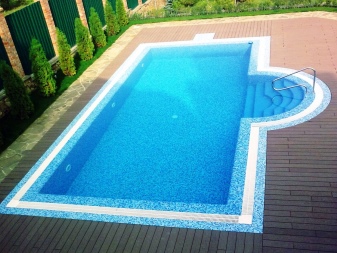

Advantages:
- aesthetic appearance;
- the lack of the possibility of spreading liquid that has gone beyond the sides of the pool;
- the intensity of water circulation eliminates the accumulation of debris and dirt at the bottom of the artificial reservoir;
- the absence of even the slightest dirty areas in the pool;
- no problems with contamination of the water line from small particles of debris, rust and grease;
- the ability to order a pool with any configuration and artistic concept;
- quick recoupment of all costs.
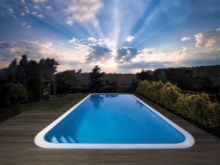
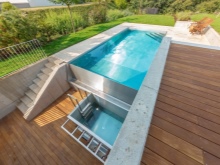
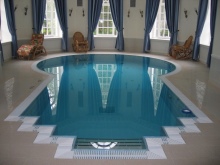
The downside of overflow pools is only their cost, which 30% more than skimmer tanks. In addition, this type of artificial reservoir requires additional space where overflow facilities will be installed.
It should also not be forgotten that the location of the technical room and equipment should be concentrated lower than the water surface.
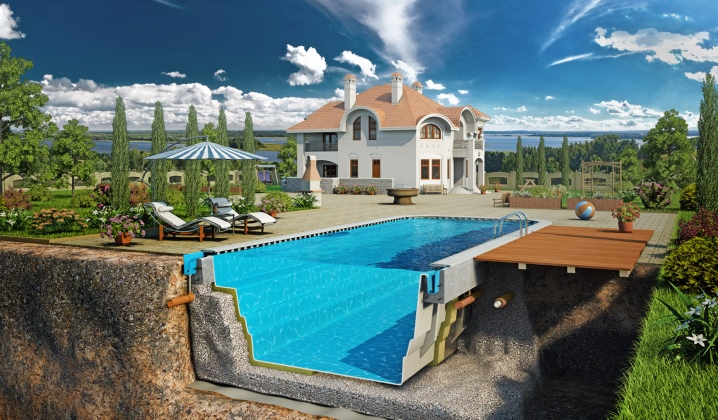
Technology system
In overflow pools, overflow-type schemes are used, which must be built in advance so that there are no unpleasant surprises. The overflow basin system includes the following elements:
- bowl;
- sides;
- drain system (drain);
- gutter;
- an overflow tank that looks like a large container;
- filters;
- nozzles.
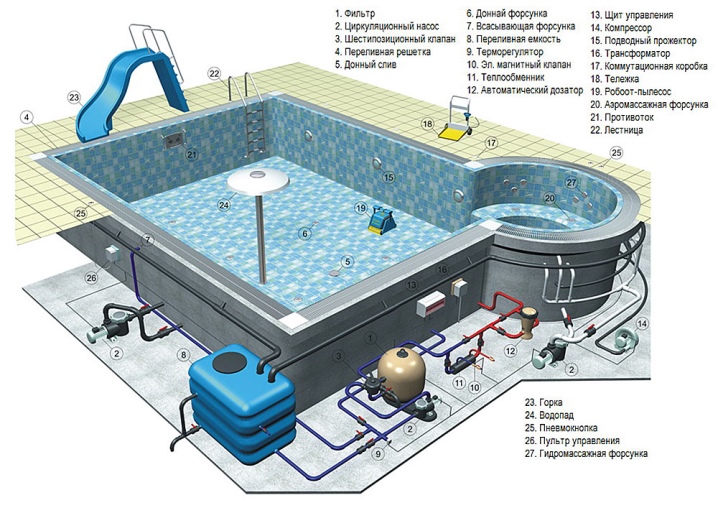
If there is a possibility or need, then additional devices are mounted to the above, which are able to distribute the total load. In order for water purification to be carried out efficiently, the design provides for the following filters:
- sand;
- for deep cleaning;
- autochlorinator.
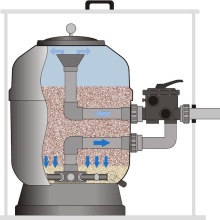
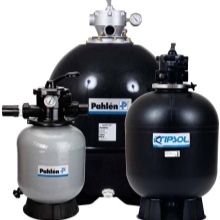
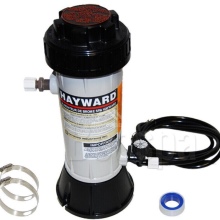
Principle of operation
The simplicity of the design ensures the long-term performance of the system. The principle of operation of overflow reservoirs does not imply anything complicated... The liquid that overflowed the sides and got into a specially designed chute is drained into the tank, which is located in front of the filtration system. Liquid cleaning is provided by means of a chemical nature with disinfecting characteristics.
The process of water purification itself is carried out in the inner part of the filters, after which the heated liquid is sent back through the nozzles to the bowl of the reservoir. To make the procedure faster, special trays are used that can improve the quality of cleaning.Some users may think that pool overflow devices require complex installation, however they are fully justified by the long-term high-quality purification of water in the structure.
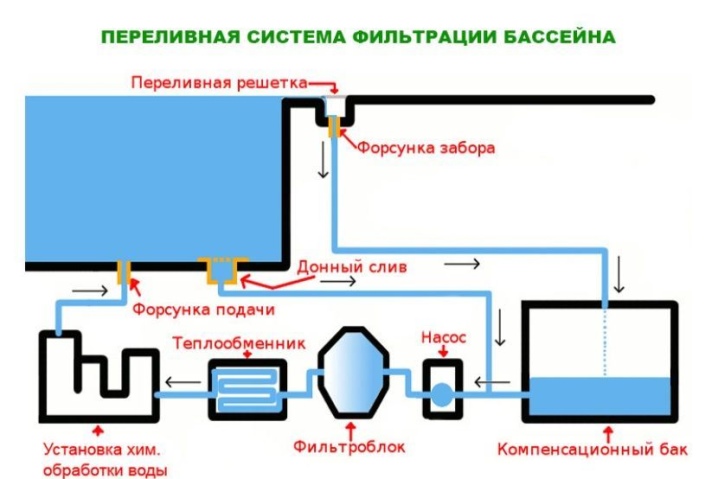
Differences from skimmer
There is a second option for pools - a skimmer one. The main differences between the systems are the following.
- For the construction of overflow structures, more area is required than for the installation of skimmer structures.
- In skimmer reservoirs, water flows through channels on the sides of the bowl, and in the second version - along the reservoir circuit, without bypassing trays and grates.
- Overflow systems are characterized by higher rates of contamination removal.
- The likelihood of water stagnation in a skimmer reservoir is much higher than in an overflow reservoir.
- The overflow tank is free of foam, grease and dirt on the waterline. Skimmer tanks are often covered with salt deposits.

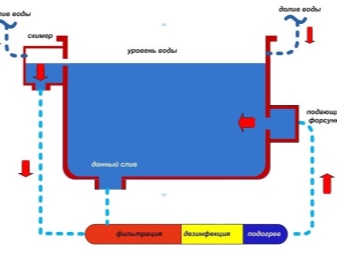
In addition to the above characteristics, it is worth noting that these types of pools differ from each other by the location of the nozzles. In skimmer tanks, they are mounted at a distance of 2 meters from each other.
For effective water supply in the overflowing pool, 1 nozzle is installed for every 2 sq. meters.

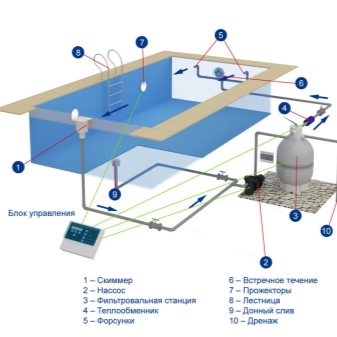
Artificial reservoirs, in which there is an overflow water treatment, not only make the cleaning process simple, but also relieve the owner of the need to constantly eliminate mucus and dirt from the outer part of the reservoir. Swimming in fresh and clean water is much more pleasant, therefore, before installing the pool, you should think about installing a cleaning system.
How to build an overflow pool, see below.



































































The comment was sent successfully.